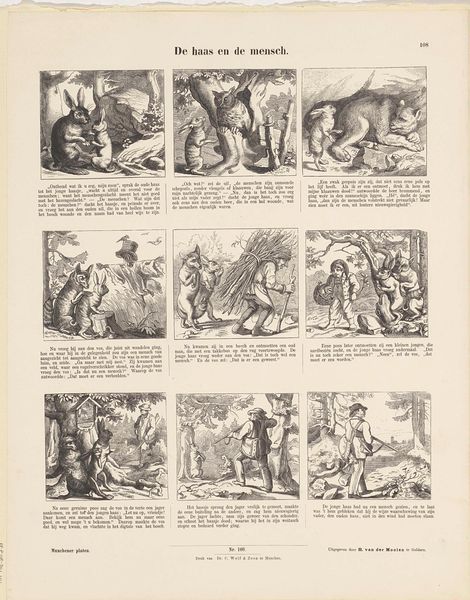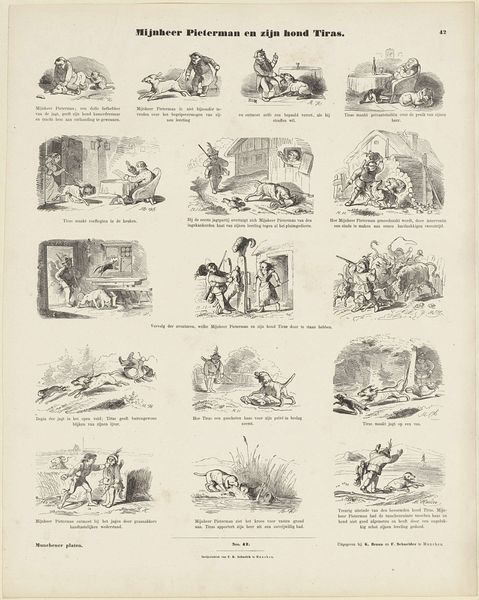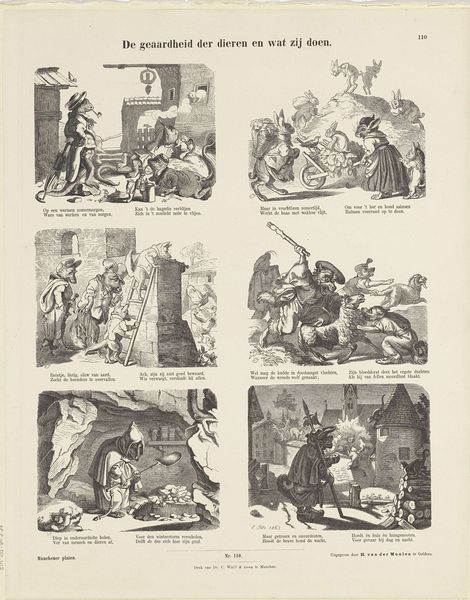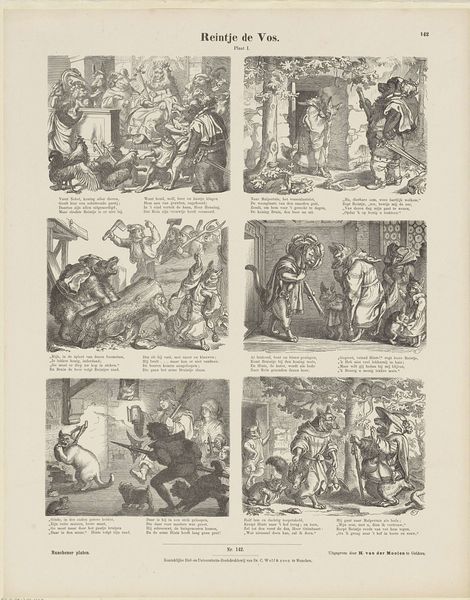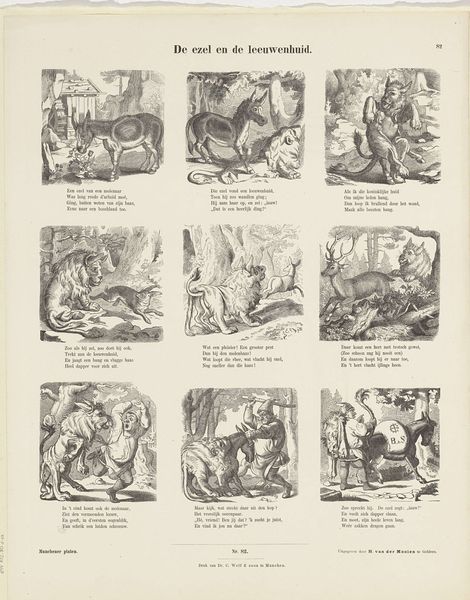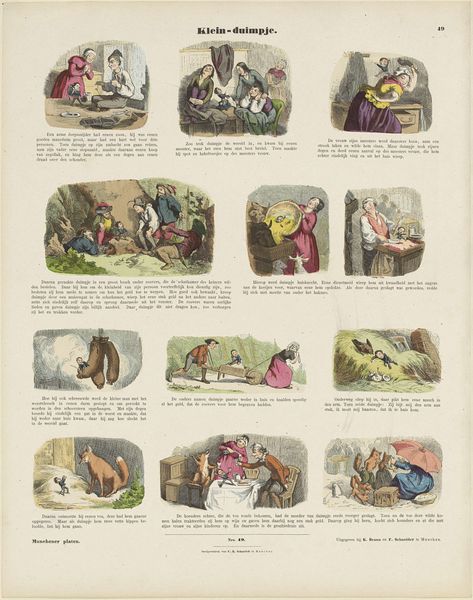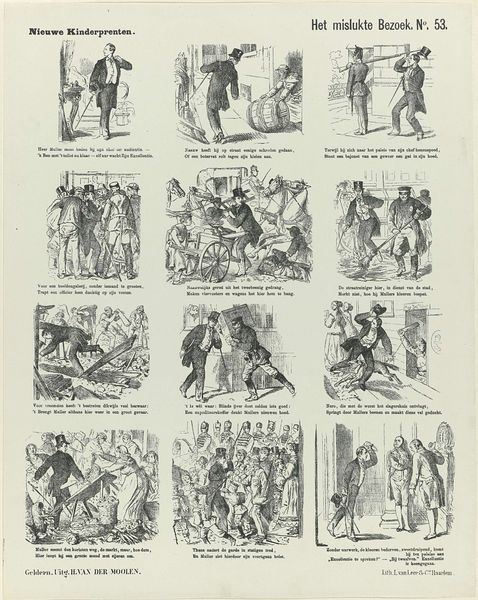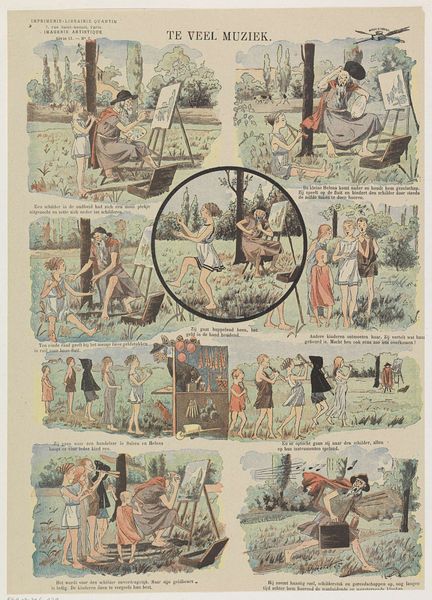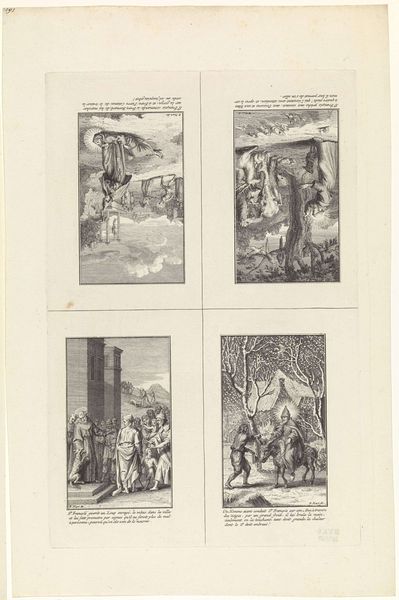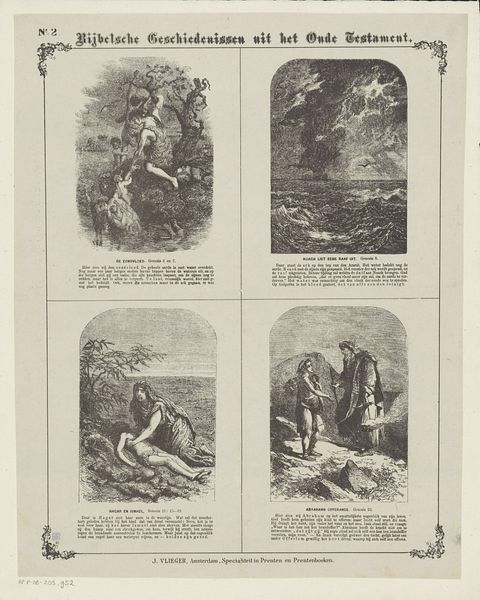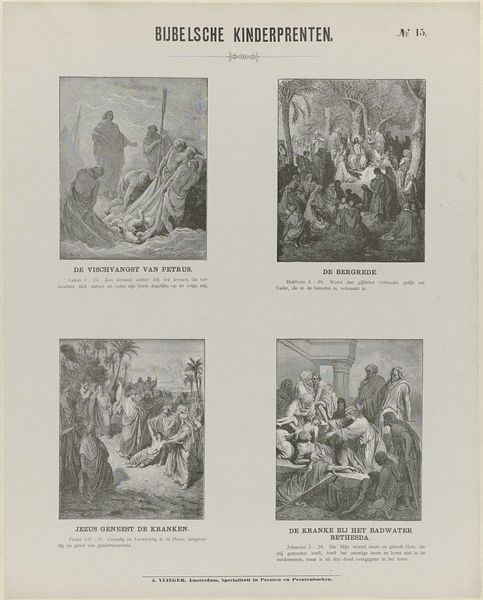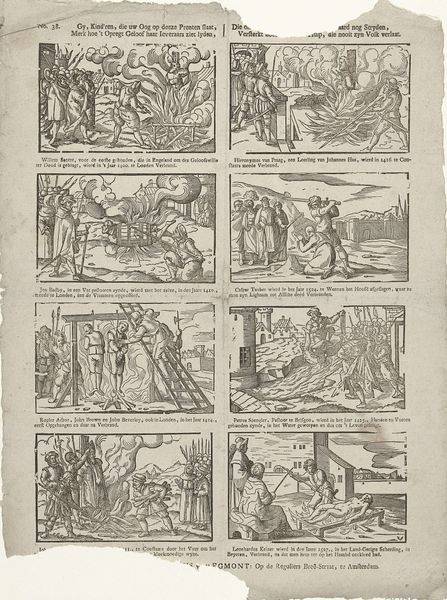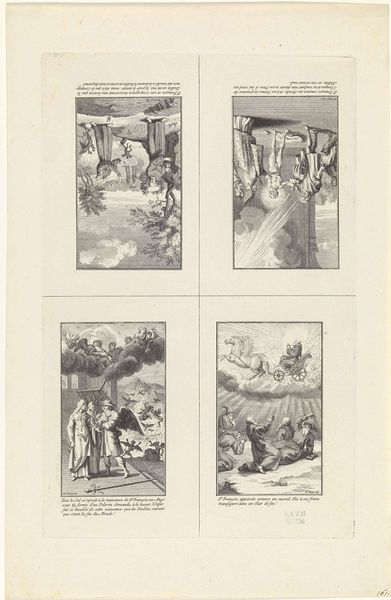
lithograph, print
narrative-art
animal
lithograph
genre-painting
Dimensions: height 421 mm, width 344 mm
Copyright: Rijks Museum: Open Domain
Curator: Here we have "Op de kermis / De dieren-temmer," which translates to "At the fair / The animal tamer." It’s a lithograph print dating back to 1873. Editor: It's rather unsettling, I must say. The small vignettes of performing animals crammed onto a single sheet give off a palpable air of anxiety. Like looking into multiple cages at once, witnessing fragmented moments of subjugation. Curator: Absolutely. It embodies a nineteenth-century sensibility, reflecting not only the human-animal dynamic but also broader themes of power and control pervasive during that era. We might interpret these images through a postcolonial lens, examining how human dominion over the animal kingdom mirrored imperialist ideologies. Editor: I'm particularly struck by the symbolic language employed. The snake being lifted up above people’s heads, the performing monkey in a costume. These all become potent symbols for disruption and cultural subversion. What anxieties might these images provoke in a Victorian audience? Curator: I agree. The visual motifs create a powerful dialogue on social norms and hidden desires. It makes me question the gaze—are we entertained, or implicated in this spectacle of control? Who benefits from these displays of mastery? How does gender play into these power structures, given the prominence of male "tamers?" Editor: Exactly! And I note how often a whip is being used. Thinkers from Foucault to Agamben have written on that exact image and what the figure of domination comes to symbolize: how human authority relies upon violence to regulate the relationship between human and non-human entities. Curator: That reading makes great sense. Perhaps our print is more subversive than it first appears; these are not images that simply celebrate control. They reveal the anxiety inherent in the human project of dominion. Editor: In some ways it remains disquieting, yes. But exploring the print has prompted reflection on how humanity attempts to define and legitimize power dynamics within societal frameworks. Curator: For me, the work emphasizes how displays of human mastery serve not just as entertainment, but as social performance steeped in complicated ideologies of power, control, and the ongoing cultural negotiation of "the Other."
Comments
No comments
Be the first to comment and join the conversation on the ultimate creative platform.
